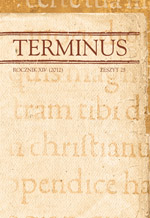Nieznane polskie subskrypcje do emblematów Ottona van Veen i Hermana Hugona. Przyczynek do funkcjonowania zachodniej grafiki religijnej w kulturze sta
Unknown Polish subscriptiones to the emblems by Otton van Veen and Herman Hugon. Some remarks on how Western sacred engravings functioned in the Old
Author(s): Radosław Grześkowiak, Jakub Niedźwiedź Subject(s): Language and Literature Studies
Published by: Wydawnictwo Uniwersytetu Jagiellońskiego
Summary/Abstract: The Seweryn Udziela Etnographic Musem in Kraków holds an impressive collection of old engravings, among which there are also copperplates by Cornelis Galle. He used selected prints from Amorum emblemata (1608) and Amoris divini emblemata (1615) by Otton van Veen and Pia desideria (1624) by Herman Hugon to form his own emblematic cycle on metaphysical relations between the Soul and Amor Divinus. The drawings from the works of Veen and Hugon were very popular in the 17th century and inspired numerous poets and editors around Europe. In the Polish-Lithuanian Commonwealth it was Hugons Pia desideria that aroused particular interest. The cycle was imitated and translated by e.g. Mikołaj Mieleszko SJ, Zbigniew Morsztyn, Aleksander Teodor Lacki and Jan Kościesza Żaba. On three of the Galle’s prints stored in the Kraków museum an anonymous author wrote, unknown until now, epigrams accompanying the icons taken from the cycle by Veen (No. 8 and 21) and by Hugon (II 5). This emblematic micro-cycle was, with all probability, written down at the end of the 17th or at the beginning of the 18th century by a nun or a monk in one of the Little Poland convents or monasteries. Possibly the origins of the cycle may be linked with the Carmelite nuns’ convent in Cracow. And whether it is the actual place where the cycle was created or not, it is a good point to begin studies on the employment of emblematic practices in Catholic convents and monasteries in the Polish-Lithuanian Commonwealth between the 16th and the 18th centuries. Imported copperplates and woodcuts were a typical piece of the equipment of a cell. They were hung on the cell walls or simply were collected in sets of prints and often exchanged as gifts among nuns or monks, e.g. on the occasion of New Years Eve (an example of such a gift from 1724 is given in this paper). It was a common practice to put notes of diverse character on the reverse side of such prints, e.g. autobiographic details, short prayers or excerpts from sacred texts and religious literature. Still, the main purpose of the emblems was their application in everyday meditations and other forms of personal prayers. The three subscriptiones in the Ethnographic Museum in Krakow are also prayers of this kind, combining word and image..
Journal: TERMINUS
- Issue Year: 14/2012
- Issue No: 25
- Page Range: 47-68
- Page Count: 22
- Language: Polish

